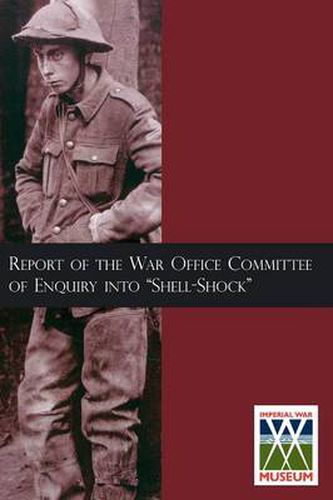Readings Newsletter
Become a Readings Member to make your shopping experience even easier.
Sign in or sign up for free!
You’re not far away from qualifying for FREE standard shipping within Australia
You’ve qualified for FREE standard shipping within Australia
The cart is loading…






This title is printed to order. This book may have been self-published. If so, we cannot guarantee the quality of the content. In the main most books will have gone through the editing process however some may not. We therefore suggest that you be aware of this before ordering this book. If in doubt check either the author or publisher’s details as we are unable to accept any returns unless they are faulty. Please contact us if you have any questions.
The sheer number of cases of ‘Shell-shock’ thrown up by the hellish conditions of trench warfare in the Great War, forced the military authorities, for the first time, to take combat stress seriously. Early in the war, the mental effects of exposure to combat had been put down as ‘malingering’; ‘lack of moral fibre’; or even cowardice. However, gradually a more enlightened attitude prevailed and hospitals - such as Craiglockhart in Edinburgh where war poets Wilfred Owen and Siegfried Sassoon were treated - were opened. Here, psychiatrists such as WHR Rivers dealt with the condition as a recognised medical problem. In many cases, neurasthenia - as combat stress was then called - only appeared after men returned home after the war. The numbers of cases of men applying for shell-shock disability pensions - 114,600 - forced the Government to set up an Enquiry committee in 1920 which reported in 1922. This is that official report. The committee, composed of doctors, military officers and Civil Servants, heard evidence from 59 expert witnesses, and its report encompassed the views of traditionalists who believed the condition resulted from physical damage to nerves, and more modern opinion, which thought the neurosis had emotional roots.
$9.00 standard shipping within Australia
FREE standard shipping within Australia for orders over $100.00
Express & International shipping calculated at checkout
This title is printed to order. This book may have been self-published. If so, we cannot guarantee the quality of the content. In the main most books will have gone through the editing process however some may not. We therefore suggest that you be aware of this before ordering this book. If in doubt check either the author or publisher’s details as we are unable to accept any returns unless they are faulty. Please contact us if you have any questions.
The sheer number of cases of ‘Shell-shock’ thrown up by the hellish conditions of trench warfare in the Great War, forced the military authorities, for the first time, to take combat stress seriously. Early in the war, the mental effects of exposure to combat had been put down as ‘malingering’; ‘lack of moral fibre’; or even cowardice. However, gradually a more enlightened attitude prevailed and hospitals - such as Craiglockhart in Edinburgh where war poets Wilfred Owen and Siegfried Sassoon were treated - were opened. Here, psychiatrists such as WHR Rivers dealt with the condition as a recognised medical problem. In many cases, neurasthenia - as combat stress was then called - only appeared after men returned home after the war. The numbers of cases of men applying for shell-shock disability pensions - 114,600 - forced the Government to set up an Enquiry committee in 1920 which reported in 1922. This is that official report. The committee, composed of doctors, military officers and Civil Servants, heard evidence from 59 expert witnesses, and its report encompassed the views of traditionalists who believed the condition resulted from physical damage to nerves, and more modern opinion, which thought the neurosis had emotional roots.